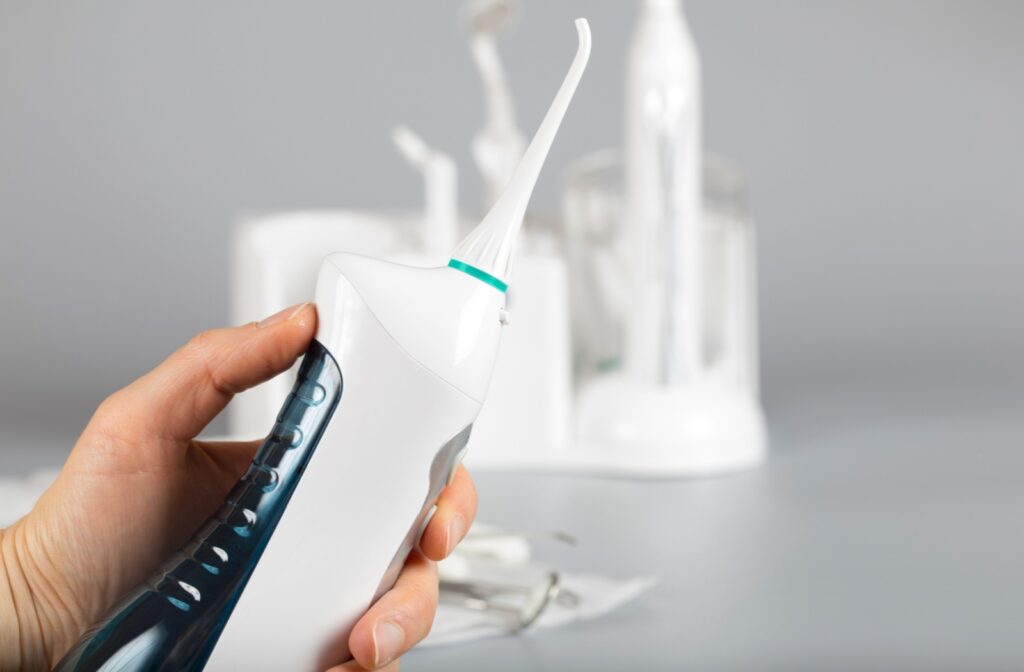When it comes to oral hygiene, flossing is a non-negotiable habit. Skipping flossing can lead to problems like gingivitis. Many people focus primarily on their front teeth, while the back molars often get overlooked. Choosing the right floss or tools and practicing good flossing techniques are 2 of the most important things to consider when learning to floss your back molars.
If neglected, these hard-to-reach teeth are prime locations for plaque buildup, lingering food particles, cavities, and gum disease. You should floss them as part of your oral hygiene routine to prevent plaque and tartar buildup and reduce the risk of cavities.
Why Your Back Molars Deserve Extra Attention
Back molars, also referred to as your “chewing teeth,” are large, flat teeth located at the rear of your mouth. Their primary function is to grind and crush food for easier swallowing. Most people have 12 molars unless they’ve had their wisdom teeth removed, in which case they probably only have 8.
Due to their size, grooves, and remote position, molars are particularly prone to plaque and debris accumulation. Left unaddressed, this buildup can lead to cavities, gum issues, and even more severe dental problems, such as infections or abscesses.
The anatomy of back molars makes them more susceptible to plaque buildup for 2 reasons:
- Deep grooves and pits: The uneven surface is excellent for chewing but can trap food and bacteria
- Hard-to-reach location: Their position at the back of the mouth makes flossing and brushing a challenge
Step-by-Step Guide to Flossing Back Molars
Flossing your back molars doesn’t have to feel like an acrobatic routine. Follow these simple steps to clean them effectively.
Get Prepared
- Choose the right floss: Look for waxed floss or dental tape, as these tend to glide more easily between tight spaces
- Get comfortable: Stand in front of a mirror and ensure there’s enough lighting that you can see what you’re doing
- Cut the floss to the right length: Aim for approximately 18–20 inches, or the distance from your shoulder to your hand. Wrap it around your index and middle fingers, leaving about 2 inches of floss between them
Use the Correct Technique
- Insert properly: Gently slide the floss between your teeth using a back-and-forth motion. Avoid snapping it, as this can damage your gums
- Create a “C shape”: Curve the floss around the molar and slide it up and down along the tooth surface and just below the gum line
- Clean both sides: Make sure you floss the surface of both teeth on either side of the contact point
Tackle Hard-to-Reach Areas
- Utilize your fingers: Use your index fingers to guide the floss for your top molars and your thumbs for your bottom molars
- Open wide: Opening your mouth as wide as possible can make it easier to angle the floss correctly
By sticking to this technique and being mindful of reaching both upper and lower molars, you’re already ahead in your oral care routine.
Alternatives to Traditional Flossing
For those who find flossing back molars especially challenging, don’t worry. There are other effective tools and methods to maintain a clean mouth.
Interdental Brushes
These tiny brushes are great for cleaning between teeth, especially for people with wider gaps. They’re easy to maneuver and can reach those tricky back areas without the hassle of wrapping floss.
Water Flossers
Water flossers use a pressurized jet of water to clean between teeth and along the gumline. They’re gentle yet effective, and a perfect option for people with braces, sensitive gums, or limited dexterity.
Avoid These Common Flossing Mistakes
Even with the best intentions, there are a few common pitfalls to avoid when flossing your molars:
- Being too aggressive: Pressing too hard or snapping the floss can damage gum tissue and irritate it or even cause bleeding
- Neglecting lower molars: Many people don’t take the time to floss their lower back molars thoroughly. Remember, all teeth matter equally when it comes to maintaining oral health
- Reusing dirty floss: Be sure to use a fresh section of floss for each tooth to avoid transferring bacteria from one spot to another
Why Daily Flossing Is Worth the Effort
Flossing back molars might seem tricky, but the benefits far outweigh the inconvenience. By committing to daily flossing, you’ll enjoy healthier gums, better breath, and a reduced risk of cavities and costly dental treatments.
Flossing doesn’t just benefit your teeth; it also impacts your overall health. Studies show that poor oral hygiene can contribute to systemic issues like heart disease and diabetes. By adding this simple habit to your routine, you’re taking a proactive step toward a healthier life.
Keep Your Smile Bright with Expert Dental Care
Your oral health matters, and flossing your back molars is a vital part of that care. If you’re finding it hard to master flossing or need personalized advice, we’re here to help. Book an appointment with our team at Shawnessy Dental Centre for a professional cleaning and customized guidance on maintaining the health and cleanliness of your molars.


